England’s patron saint: Saint George
‘Cry ‘God for Harry! England and Saint George!’,
Shakespeare, Henry V.
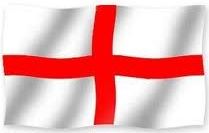
Today is St George’s Day. St George is the patron saint of England. Below are some images of the medieval St George and his dragon.
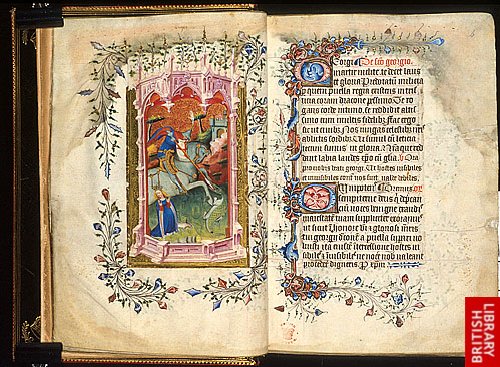 ‘St George and the dragon’ from Prayers to Saints (England, S. E. (London) and Netherlands, S. (Bruges), after 1401, before 1415),
‘St George and the dragon’ from Prayers to Saints (England, S. E. (London) and Netherlands, S. (Bruges), after 1401, before 1415),
shelfmark Royal 2 A XVIII ff. 5v-6, © British Library Board.
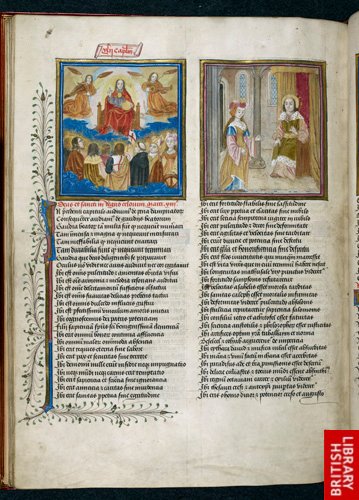 ‘George, patron saint of England’ from Speculum humanae salvationis (England, S. E. (London), between 1485 and 1509),
‘George, patron saint of England’ from Speculum humanae salvationis (England, S. E. (London), between 1485 and 1509),
shelfmark Harley 2838 f.44v, © British Library Board.
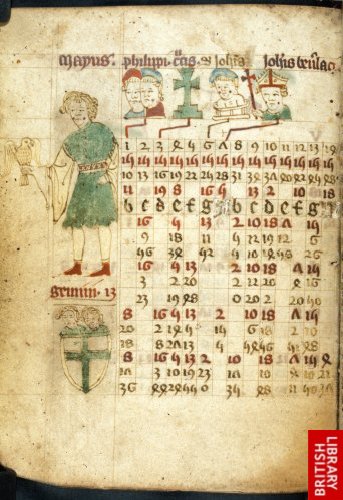 ‘Calendar page for April with tinted drawings of saints Tiburtius and Valerianus, George, Wilfrid, and Mark.’ from Almanac with an astrological miscellany (England, 1st quarter of the 14th century (before 1412)), shelfmark Harley 2332 f. 5v, © British Library Board.
‘Calendar page for April with tinted drawings of saints Tiburtius and Valerianus, George, Wilfrid, and Mark.’ from Almanac with an astrological miscellany (England, 1st quarter of the 14th century (before 1412)), shelfmark Harley 2332 f. 5v, © British Library Board.
 ‘Adoration of the Shepherds and George and the dragon’ from Lovell Lectionary (England, S. (probably Glastonbury), between c. 1400 and c. 1410),
‘Adoration of the Shepherds and George and the dragon’ from Lovell Lectionary (England, S. (probably Glastonbury), between c. 1400 and c. 1410),
shelfmark Harley 7026 f. 6, © British Library Board.
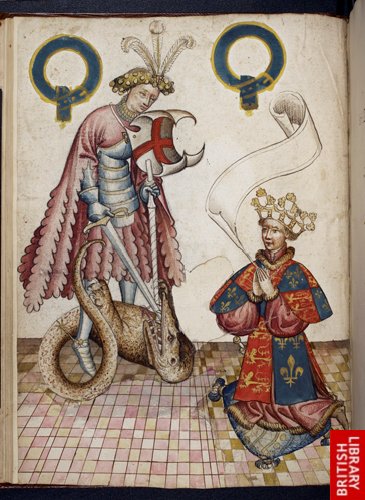 ‘Miniature of William Bruges kneeling before George’ from Pictorial book of arms of the Order of the Garter (‘William Bruges’s Garter Book’), (England, S. E. (probably London),
‘Miniature of William Bruges kneeling before George’ from Pictorial book of arms of the Order of the Garter (‘William Bruges’s Garter Book’), (England, S. E. (probably London),
c.1430-c.1440 (before 1450)), shelfmark Stowe 594 f. 5v , © British Library Board.
William Shakespeare (bapt 26 Apri 1564, died 23 April 1616
Today is also the anniversary of William Shakespeare’s death. Below are the words of the great man on England:
‘Once more unto the breach, dear friends, once more,
Or close the wall up with our English dead.
In peace there’s nothing so becomes a man
As modest stillness and humility;
But when the blast of war blows in our ears,
Then imitate the action of the tiger;
Stiffen the sinews, summon up the blood,
Disguise fair nature with hard-favour’d rage;
Then lend the eye a terrible aspect;
Let it pry through the portage of the head
Like the brass cannon; let the brow o’erwhelm it
As fearfully as does a galled rock
O’erhang and jutty his confounded base,
Swill’d with the wild and wasteful ocean.
Now set the teeth and stretch the nostril wide,
Hold hard the breath, and bend up every spirit
To his full height. On, on, you noblest English,
Whose blood is fet from fathers of war-proof!
Fathers that, like so many Alexanders,
Have in these parts from morn till even fought,
And sheath’d their swords for lack of argument.
Dishonour not your mothers; now attest
That those whom you call’d fathers did beget you.
Be copy now to men of grosser blood,
And teach them how to war. And you, good yeomen,
Whose limbs were made in England, show us here
The mettle of your pasture; let us swear
That you are worth your breeding, which I doubt not;
For there is none of you so mean and base,
That hath not noble lustre in your eyes.
I see you stand like greyhounds in the slips,
Straining upon the start. The game’s afoot!
Follow your spirit, and upon this charge
Cry, “God for Harry! England and Saint George!”‘
William Shakespeare, Henry V, Act III, Scene 1.
This royal throne of kings, this sceptred isle,
This earth of majesty, this seat of Mars,
This other Eden, demi-paradise,
This fortress built by Nature for herself
Against infection and the hand of war,
This happy breed of men, this little world,
This precious stone set in the silver sea,
Which serves it in the office of a wall
Or as a moat defensive to a house,
Against the envy of less happier lands,–
This blessed plot, this earth, this realm, this England.
William Shakespeare, Richard II, Act II, Scene 1.
Further information
– Saint George.
– Paolo Uccello, Saint George and the dragon, (about 1470).
– Jacopo Tintoretto, Saint George and the Dragon, (about 1555).
– Patron Saints, National Gallery, London.
– Kenneth Branagh’s ‘Once more unto the breach’ from Shakespeare’s Henry V.
– TV programmes on the bard The king and the playwright: A Jacobean history, first episode to be shown on BBC4 on 23 April 2012.
All digital images pn this blog are from the British Library’s Online Images archive and appear by courtesy of the British Library Board and may not be reproduced (© British Library Board).
You may also be interested in the following posts
– Medieval and early modern images from the British Library
